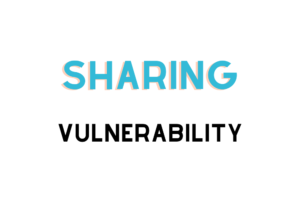
As we work to build strong school communities, communities of care and service, there are three key skills that can help us:
- Build safety. When we create a safe environment, people connect, create bonds of belonging, and forge a group identify.
- Share vulnerability. We express our organization’s true needs with clarity and urgency. Doing this allows others to step forward to act with trust and cooperation.
- Establish purpose. With clear purpose our organization becomes a place where we share goals and values.
What does it mean to share vulnerability?
As leaders we may think that we should have all the answers, that whatever happens on our call, we should be able to handle it. Daniel Coyle in his book, Culture Code: The Secrets of Highly Successful Groups, shares the story of the 1989 crash of United Airlines flight 232.
An hour and ten minutes into the flight an engine exploded. Shrapnel severed the main and backup hydraulic lines that connected the rudder, ailerons and wing flap. The odds of this situation happening was calculated to be one in a billion and not survivable.
The plane crash landed in Sioux City, Iowa. It was a terrible crash but 185 of the 285 passengers and crew survived. Captain Al Haynes and his crew, along with the help of a United pilot trainer who happened to be aboard, save 185 lives because of sharing vulnerability.
From the time of the explosion to landing, Haynes, instead of projecting coolness and competence, shared his vulnerability with crew and passengers: Your captain has no idea what is going on or how to fix it. Can you help? Quickly letting go of the need to be in control allowed Haynes, and his thrown-together flight team, to perform an amazing feat, one has not been duplicated in numerous flight simulations.
Haynes sharing vulnerability with clarity and urgency allowed the people on Flight 232 to step forward to help and perform a seemingly impossible task. How can we translate this to our own organizations?
We can help others learn to create vulnerability loops. The loop consists of these steps:
1. Person A sends a signal of vulnerability.
2. Person B detects this signal.
3. Person B responds by signaling their own vulnerability.
4. Person A detects this signal.
5. A norm is established and trust increases.
Psychologist, Arthur Aron, has come up with a set of 36 questions that can help us create vulnerability loops. Another communication term you might be familiar with, instead of vulnerability loops, is self-disclosure.
Put It Into Action
You can download those 36 questions below. What if you asked one of these questions every day and in meetings within your organization? Would becoming familiar with creating self-disclosure and vulnerability loops help your community build trust and cooperation that leads to a high-performing organization?
This month, I invite you use this to help your community members practice and understand vulnerability loops. Trust and cooperation, and more, should follow.

